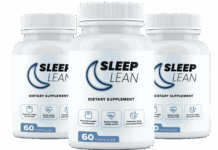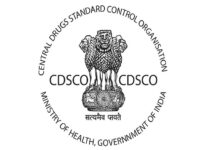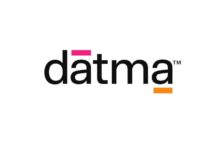The societal harm which happens to be brought on by the opioid epidemic happens to be incalculable. Because of their drug expertise as well as direct patient care, pharmacists are pretty critical when it comes to addressing crisis by both advocating for their patients as well as assisting providers.
It is well to be noted that in 2021, there happened to be 80,411 opioid overdose deaths, which comprised of 75% of overall drug overdose deaths.1 Opioids happen to have a long history of use, but, and were first documented in the 8th century BC in Mesopotamia, with Assyrian reliefs going ahead and demonstrating Papaver somniferum, called as the opium poppy, being valued because of its analgesic as well as sedative effects.2 But the roots of opioid crisis lay much closer to contemporary era, especially in the 1990s when the drug companies falsified data so as to convince both Drug Enforcement Administration- DEA and prescribers that opioids were indeed safe as well as effective by citing high number of patients having undertreated pain.3
Traditionally, specialized clinicians have gone on to treat the opioid use disorder (OUD). But due to the overwhelming requirement, the guidelines go on to recommend enlisting the aid when it comes to the general practitioners, such as primary care, obstetrics as well as emergency providers.4 Often, providers happen to be unwilling to treat OUD because of their lack of training as well as resources.3 The pharmacotherapeutic expertise when it comes to pharmacists in addiction services goes on to make them vital resources when it comes to prescribers, by way of assisting in terms of drug selection, dosing, tracking the guidelines as well as treatment optimization.
The pharmacists go on to dispense millions of opioids every year thereby making them better positioned so as to screen for patients who are most likely to develop addiction and refer them to treatment resources right before the abuse goes on to escalate to opioid use disorder OUD.
OUD is characterized by abuse as well as dependency, and co-morbidities go on to include psychiatric conditions, metabolic disorders, cardiovascular disease, overdose as well as withdrawal. During the treatment initiation, patient gets tracked closely for signs of withdrawal, which can be mild or life-threatening. It is characterized by insomnia, hyperalgesia, hypertension,anxiety, or even death.5
It is well to be noted that the treatment happens in 3 phases: induction phase, withdrawal management as well as maintenance therapy. Medication assisted treatment- MAT is the standard when it comes to care and the FDA-approved interventions go on to include methadone, buprenorphine as well as naltrexone.4 When it comes to the induction phase, methadone as well as buprenorphine, long-acting synthetic opioids, happen to be used to ease patients off euphoria-inducing, short-acting opioids. Eradicating the euphoric highs goes on to weaken the physiological drive in terms of addiction. Maintenance happens to involve continuing opioid replacement and that too at low doses or ideally shifting to naltrexone. In entirety, methadone as well as buprenorphine decrease the risk of overdose, lessen risky behavior and also improve outcomes.4
Interestingly, historically, methadone with a dose of 80 mg to 160 mg daily happens to be the mainstay of treatment. A complete mu-receptor agonist, it happens to have lowest withdrawal potential. Apart from this, it has a narrow therapeutic index because of its high abuse potential, complex tapering, overdose potential, intricate dosing as well as long half-life, which is between 12 to 150 hours.5
It is worth noting that Buprenorphine comprising of 8 mg to 24 mg daily, and a partial mu-receptor, surges the likelihood of withdrawal. But, compared to methadone, buprenorphine has gone on to lessen the abuse potential, enhanced the treatment retention and resulted in better outcomes.6 Having a superior safety profile, buprenorphine happens to be preferred to methadone for induction as well as maintenance. The FDA has gone on to loosen buprenorphine prescribing limitation allow all practitioners having a DEA license to use it for treatment, sans obtaining X-waiver certification.4
Naloxone, which is a short-acting opioid antagonist, happens to be most known for its usage as a nasal spray when it comes to overdose reversal.7 Furthermore, naloxone can get added to buprenorphine products in order to reduce abuse potential, since it goes on to block intravenous or intranasal opioids.8
Significantly, Naltrexone with a dosage of 50 mg daily, is a full mu-receptor antagonist and happens to have greatest propensity when it comes to causing withdrawal if in case used for treatment induction.9 It happens to have high bioavailability and also blocks all routes of opioid usage.8 Due to these characteristics, it is routinely made use for maintenance therapy, wherein it reduces cravings as well as prevents relapse. Naltrexone happens to be initiated post the patient is opioid free for 7 days and happens to be an excellent long-term therapy due to the fact that it is well tolerated and at the same time also lacks addictive potential.9
Because of their direct contact with patients, pharmacists can go ahead and advocate for patients who would then get benefitted from long acting injectables- LAIs. Given the high cost, patients may as well require assistance when it comes to accessing such medications. LAIs happen to be increasingly being utilized in terms of patients failing oral therapy because of their abilities so as to prevent diversion, enhance the adherence, and also safeguard the relapse. Apart from this they allow patient to go ahead and live a fuller life having long dosing intervals. Products have in it buprenorphine, naltrexone as well as buprenorphine/naloxone.
Adjunct medications happen to be also required so as to address acute conditions that are seen with OUD treatment which include insomnia, nausea, anxiety, hypertension as well as hyperalgesia.4
Though buprenorphine is indeed essential in terms of decreasing opioid related morbidity as well as mortality, there can indeed be avoidable supply disruption, having the wholesalers placing everyday ordering limits. Because of this, even the specialty addiction services pharmacies can go on to experience shortages in case of supplying treatment rehabilitation centers, thereby resulting in subtherapeutic drug levels, disruption within the treatment initiation or even maintenance as well as increasing the risk of withdrawal as well as relapse.
The fact is that as the opioid crisis goes on, reform is required to make sure of a stable buprenorphine supply.10
Taking into account the extent of opioid crisis as well as the complexity when it comes to treatment for OUD, pharmacist happens to be an essential member of care team. Their expertise within the relevant fields is indeed invaluable to prescribers who happen to be unfamiliar with J and can go ahead and help to make sure that patients get the best possible chance in terms of recovery.
References
- Centers for Disease Control and Prevention. Opioid Overdose. Last reviewed August 23, 2023. Accessed August 23, 2023. https://www.cdc.gov/drugoverdose/deaths/opioid-overdose.html
- Buchanan WW, Rainsford KD, Kean CA, Kean WF. Narcotic analgesics. Inflammopharmacology. 2023;10.1007/s10787-023-01304-y. doi:10.1007/s10787-023-01304-y
- Volkow ND, Blanco C. The changing opioid crisis: development, challenges and opportunities. Mol Psychiatry. 2021;26(1):218-233. doi:10.1038/s41380-020-0661-4
- Srivastava AB, Mariani JJ, Levin FR. New directions in the treatment of opioid withdrawal. Lancet. 2020;395(10241):1938-1948. doi:10.1016/S0140-6736(20)30852-7
- Substance Abuse and Mental Health Services Administration. Methadone. Last updated June 20, 2023. Accessed August 18, 2023. https://www.samhsa.gov/medications-substance-use-disorders/medications-counseling-related-conditions/methadone
- Substance Abuse and Mental Health Services Administration. Buprenorphine. Last updated July 18, 2023. Accessed August 18, 2023. https://www.samhsa.gov/medications-substance-use-disorders/medications-counseling-related-conditions/buprenorphine
- Substance Abuse and Mental Health Services Administration. Naloxone. Last updated April 25, 2023. Accessed August 18, 2023. https://www.samhsa.gov/medications-substance-use-disorders/medications-counseling-related-conditions/naloxone
- Velander JR. Suboxone: Rationale, Science, Misconceptions. Ochsner J. 2018;18(1):23-29
- Substance Abuse and Mental Health Services Administration. Naltrexone. Last updated June 9, 2023. Accessed August 18, 2023. https://www.samhsa.gov/medications-substance-use-disorders/medications-counseling-related-conditions/naltrexone
- Ostrach B, Carpenter D, Cote LP. DEA Disconnect Leads to Buprenorphine Bottlenecks. J Addict Med. 2021;15(4):272-275. doi:10.1097/ADM.0000000000000762


















